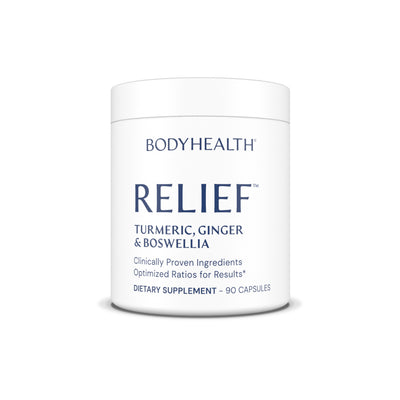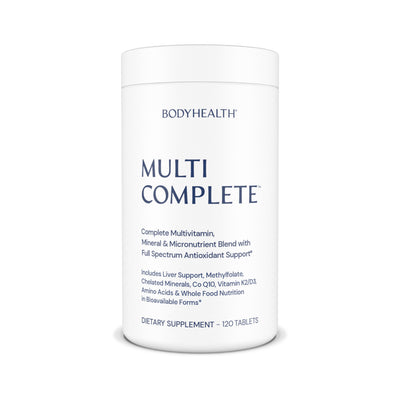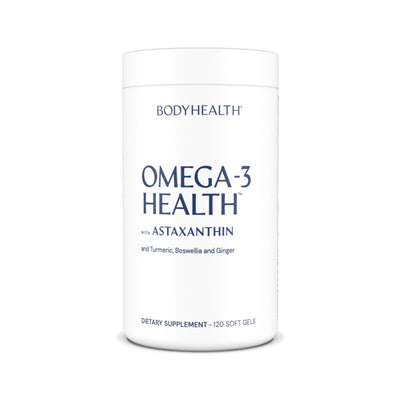Why Energy & Sleep Rise, And Stress Falls On The Fat Loss Protocol
February 11, 2024 4 min read

Welcome to the final week of the 30-Day Fat Loss Challenge!
During this challenge we’ve had our ups and downs as cravings came and went and hormones began to balance.
But by Week Four things have evened out or soon will.
Energy levels rise, mood may become more even, sleep becomes more restful, digestion improves, and overall health rises.
And, of course, we’ve lost a significant amount of body fat.
Make sure to take new measurements to compare to your original measurements!
As always, if you need any help, be sure to reach out in the VIP Group so we can answer any questions and assist however we can.
But I want to quickly cover what’s happening in this final week.
When we start on the Fat Loss Protocol, the first thing that happens is we give our body a bit of a shock.
If we have excess body fat (not just a tiny bit), then we know:
- Our energy and hunger hormones are out of balance (along with others),
- Our cells are structured to use sugar for energy instead of fat,
- Our digestion isn’t up to par,
- And we have harmful bacteria in our digestive tract.
We’re also going to have lower energy levels, a harder time falling or staying asleep, lessened strength, lower overall health, and higher stress levels — to one degree or another.
All of this comes from processed foods and processed, hidden sugars in these foods, and their effect on our hormones and cells.
But when we take them away we make things worse before they become better: cravings, energy highs and lows, and emotional ups and downs.
This is necessary to get things jump-started.
And to get us through this as fast as possible, we take high amounts of PerfectAmino and Omega 3 on top of the whole-food protein and fats we’re eating.
But now our insulin levels are much lower. This allows for fat loss that couldn’t occur before.
It also allows for lower levels of cortisol, the stress hormone.
Cortisol is called the stress hormone not only because it’s released during times of stress, but also because when it’s released it canmakeus feel stressed.
It also lowers energy levels, depresses mood, and makes it harder to relax or fall asleep.
So as cortisol comes down our energy levels rise, as well as mood, and our sleep can improve.
Our digestion is also improving. The enzymes and acid that allow you to fully digest your foods are made of amino acids from protein.
If you don’t have enough protein in your diet then your body won’t have enough amino acids to make new digestive enzymes.
So you’ll digest less of the food you eat and get less nutrition.
As this improves, your body starts getting more and more of the nutrition you’re feeding it. This alone can cause quite an effect.
The food on this protocol, along with PerfectAmino, also helps to rebalance your digestive tract, feeding thebeneficial bacteria in your colon.
These beneficial bacteria produce or help to produce your calming neurotransmitters like serotonin and GABA.
When we eat processed foods, or foods high in processed sugars, we throw these bacterial ratios out of balance.
So with this protocol we’ve taken away the foods that feed harmful bacteria, and included the foods that feed the beneficial bacteria.
For some it will take longer to put this into proper balance, but it can be done for everyone.
It might not surprise you at this point to know that the bacteria that raise serotonin and GABA are fed by... amino acids.
These help to even out our mood and allow us to relax easier. They also promote more restful sleep.
But while each of these things is wanted, they’re also each necessary for sustainable fat loss.
If we didn’t address sleep, cortisol levels would rise again after the challenge, triggering sugar cravings.
When mood is lower this can also trigger cravings.
If our hunger hormones weren’t fixed we would still feel hungry even when we’d eaten, causing us to over-eat later on.
We need to ensure each of the points are fully balanced if we want to keep the weight off after the protocol ends.
So keep following the protocol to the end, take an extra serving of PerfectAmino if any cravings crop up, make sure you're keeping your protein/fat levels high and your carbohydrate levels low, and take your probiotics, Omega 3, and Multi Complete.
I can’t wait to see the results at the end!
Alright, message us in the Group if you have any questions or need anything. And you can also share your progress there and see others' progress.
And on the Diet & Protocol page you'll find a code you can use to purchase any missing items you may need, and you can save at least 15% when purchasing a 30-Day Fat Loss Challenge Package.
And if you haven't seen the Guide To Sustainable Fat Loss & 30-Day Challenge, check them out.
INDEX TO THE GUIDE TO SUSTAINABLE FAT LOSS:
Introduction & Getting Started:
- Introduction To Sustainable Fat Loss & The 30-Day Challenge
- The Key To Sustainable Fat Loss: Calories + Hormones
- The 30-Day Fat Loss Challenge: Diet & Protocol
- The 30-Day Fat Loss Challenge: Workout
Week One:
- The 30-Day Fat Loss Challenge Starts: Running Your Diet The Right Way
- Body Fat Is Made From Sugar — Not Fat
- Reversing Insulin Resistance & Speeding Fat Loss
Week Two:
- What's Causing Cravings For Sugar & Junk Food
- Digestion Is Key To Sustainable Fat Loss
- Cortisol: The Hormone That Makes Fat Loss Nearly Impossible
Week Three:
- How Poor Sleep Prevents Fat Loss
- Estrogen Dominance Prevents Fat Loss In Women & Men
- Raising Growth Hormone & IGF For Fat Loss
Week Four:
- Hunger Vs Cravings: When To Transition Out Of Fat Loss
- Transitioning From Fat Loss To Lean Body
- How Our Corn & Soy Based Diet Prevents Fat Loss
Week Five:
- Why Energy & Sleep Rise, And Stress Falls On The Fat Loss Protocol
- End of The Fat Loss Challenge, On To Lean Body/Lean Bulk
Articles by Health Topic
Your Path To Better Health Starts Here!
From in-depth articles on nutritional benefits to updates on new product launches, stay informed and inspired on your journey to optimal health.
*These statements have not been evaluated by the Food and Drug Administration. These products are not intended to diagnose, treat, cure, or prevent any disease.





